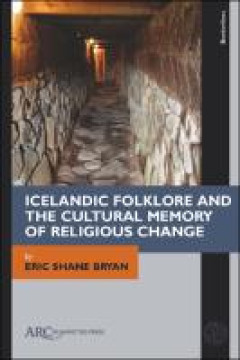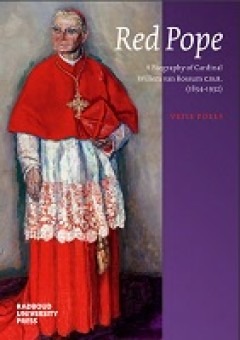Ditapis dengan

E-book Liberals, Conservatives, and Mavericks: On Christian Churches of Easte…
No Church is monolithic—this is the preliminary premise of this volume on the public place of religion in a representative number of post-communist countries. The studies confirm that within any religious organization we can expect to find fissures, factions, theological or ideological quarrels, and perhaps even competing interest groups, such as missionary workers, regular clergy versus secu…
- Edisi
- -
- ISBN/ISSN
- 9789633864579
- Deskripsi Fisik
- 443 halaman, ilus.
- Judul Seri
- -
- No. Panggil
- 274 CIB l

E-Book Icelandic Folklore and the Cultural Memory of Religious Change
This book attempts to understand the origins and development of religious belief in Iceland and greater Scandinavia through the lenses of five carefully selected Icelandic folktales collected in Iceland during the nineteenth century. Each of these five stories has a story of its own: a historical and cultural context, a literary legacy, influences from beliefs of all kinds (orthodox and heterod…
- Edisi
- -
- ISBN/ISSN
- 9781641893756
- Deskripsi Fisik
- 171 halaman, ilus.
- Judul Seri
- -
- No. Panggil
- 270 BRY i

E-Book Red Pope: A Biography of Cardinal Willem van Rossum C.Ss.R. (1854–1932)
- Edisi
- -
- ISBN/ISSN
- 9789493296206
- Deskripsi Fisik
- 669 halaman
- Judul Seri
- -
- No. Panggil
- 922.1 POE r
- Edisi
- -
- ISBN/ISSN
- 9789493296206
- Deskripsi Fisik
- 669 halaman
- Judul Seri
- -
- No. Panggil
- 922.1 POE r
E-book (Trans)missions : Monasteries as Sites of Cultural Transfers
From the Early Middle Ages onwards, both university and monastic theologians were occupied and concerned with the spiritual struggle against sin. The idea was based on the notion that in this world, people are surrounded by the power of the Devil and are left at the mercy of the Devil’s temptations. The enclosed monastery on the other hand represented a…
- Edisi
- -
- ISBN/ISSN
- 9781803273259
- Deskripsi Fisik
- 189 hlm
- Judul Seri
- -
- No. Panggil
- 274 BRE t
E-book Cultures in Conflict : Religion, History and Gender in Northern Europe…
For the debates about the ultramontanization of Catholicism in the course of the nineteenth century the contrast of an early example of pilgrimages and a later case during the heyday of ultramontanism can be revealing. Though sim-ilar in social and gender aspects there are differences on the level of organiza-tion, inherent ultramontanism and transnational traits. The phenom…
- Edisi
- -
- ISBN/ISSN
- 9783631847312
- Deskripsi Fisik
- 222 hlm
- Judul Seri
- -
- No. Panggil
- 274 BLA c
E-book History and Religion
History is one of the most important cultural tools to make sense of one’s situation, to establish identity, define otherness, and explain change. As a consequence, the scientific discipline of history is not only practiced, but the study of historiography has advanced to a thriving field of research. In fact, an impressive amount of theoretical literature on historiography has been brought f…
- Edisi
- -
- ISBN/ISSN
- 9783110445954
- Deskripsi Fisik
- 472 hlm
- Judul Seri
- -
- No. Panggil
- 272 OTT h
 Karya Umum
Karya Umum  Filsafat
Filsafat  Agama
Agama  Ilmu-ilmu Sosial
Ilmu-ilmu Sosial  Bahasa
Bahasa  Ilmu-ilmu Murni
Ilmu-ilmu Murni  Ilmu-ilmu Terapan
Ilmu-ilmu Terapan  Kesenian, Hiburan, dan Olahraga
Kesenian, Hiburan, dan Olahraga  Kesusastraan
Kesusastraan  Geografi dan Sejarah
Geografi dan Sejarah